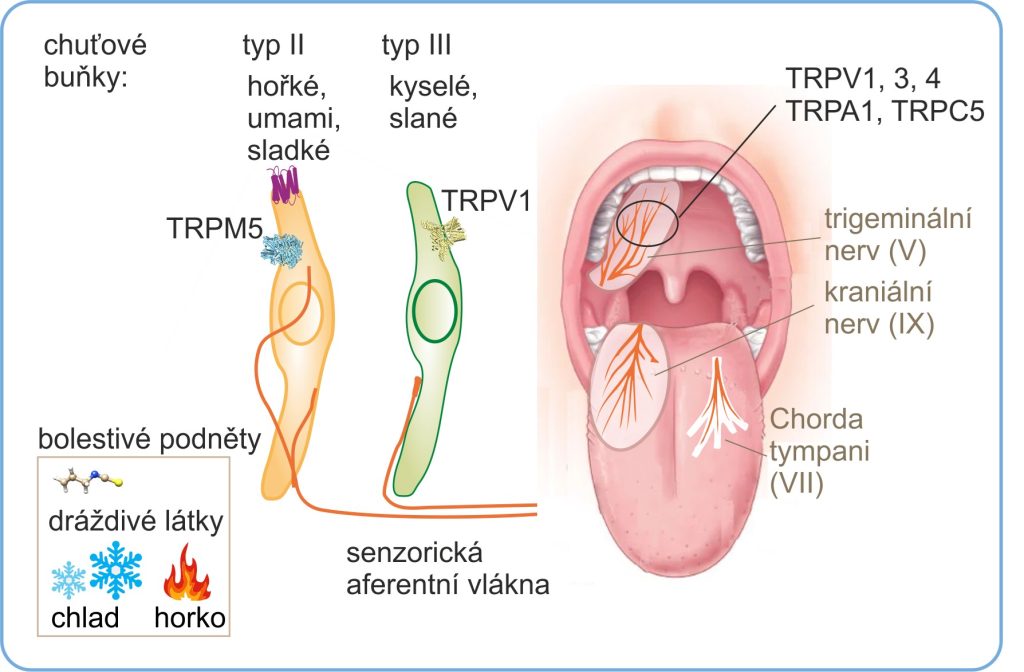2024/25 – WE ARE CURRENTLY LOOKING FOR STUDENTS TO HELP US WITH THIS PROJECT
From the texture and taste of a food, we are able to discern much about whether it will be beneficial or harmful to us. In evolutionary terms, this ability probably meant the difference between life and death for all living organisms. Therefore, the molecular mechanisms of taste, olfaction, and trigeminal sensation are highly conserved in different species to serve the basic physiological function of survival. Equally important are the protective mechanisms for detecting external signals of a chemical and physical nature that threaten us and can trigger nociception and pain. The nociceptive and taste pathways overlap and share some of the transduction molecules and signalling cascades. Indeed, some chemical compounds such as pungent spices, cinnamon, mint or menthol, activate receptors associated with other senses than taste by mediating coolness, burning, irritation, stinging, tingling or pain. Polymodal sensory neurons that innervate the tongue, throat and mouth transduce the information about the texture, temperature and fluidity of food to electrical signals that are conveyed to the brain as information about the chemical and physical nature of taste. Pain stimuli converge on similar pathways in the central nervous system.

The peripheral sensory neurons that contribute to the perception of pain and taste express temperature-sensitive transient receptor potential (thermoTRP) ion channels, which transduce chemical and physical stimuli and modulate the transduced signals. Some of the thermoTRP channels are also expressed in the taste buds (TRPM4/5, TRPV1) and are directly involved in the detection of tastes (sweet, bitter, umami, sour). Recent research has confirmed that a significant number of functional thermoTRP channels are present in oral tissues. However, how these thermoTRPs are involved in the perception of astringent taste is still poorly understood. In food, astringent compounds derived from plants are mostly phenolic compounds such as tannins. Astringency is a temperature-dependent tactile sensation of dryness and roughness perceived in the oral cavity and combines several sub-qualities such as harsh, pucker, or velvet. Although the molecular onset of astringency has been associated with the activation of specific mechanoreceptors and G-protein coupled receptors, it is not known how temperature-sensitive ion channels present in the oral cavity contribute to this trigeminal sensation.
